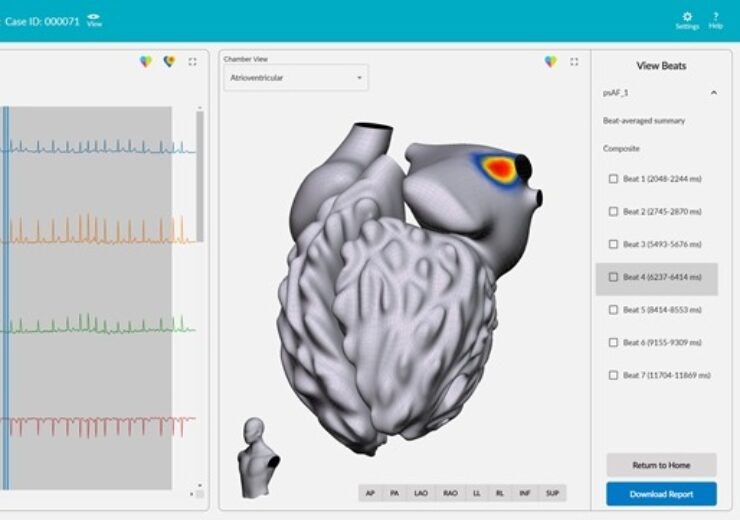The vMap system will enable to map potential arrhythmia sources or hot spots linked with stable or unstable arrhythmias anywhere in the heart within three minutes

vMap is a non-invasive arrhythmia-source mapping system designed to identify arrhythmia hot spots anywhere in the heart in minutes. (Credit: Business Wire)
Vektor Medical has secured 510(k) clearance from the US Food and Drug Administration (FDA) for its new computational ECG mapping system called vMap.
Using only ECG data, the new technology can detect arrhythmia hot spots anywhere in the heart in minutes.
Claimed to be the first of its kind in the world, vMap will help map potential arrhythmia sources or hot spots linked with stable or unstable arrhythmias anywhere in the heart, including all four chambers, the septal wall, and the outflow tracts, within three minutes.
Using computational modelling, the data will be analysed for the creation of actionable 2D and 3D maps of potential arrhythmia sources.
Designed to help improve outcomes in ablation procedures, the vMap system will be supplied to sites across the US.
According to the company, vMap has shown success in detecting arrhythmia sources for a range of arrhythmias, including atrial fibrillation.
Clinicians can use the system to gather case information, download and mark up an ECG in the system, as well as obtain a three-dimensional, interactive arrhythmia hot spot map visualising the inside and outside of the heart.
vMap is also suitable to be used as a non-invasive standalone tool or as a complement to traditional invasive electro-anatomical mapping systems in planning and procedural settings, said the company.
Vektor Medical CEO Mike Monko said: “Cardiac arrhythmias impact millions of people across the globe, increasing the risk of serious health-related issues, such as stroke, heart failure, and even death. Yet, today’s therapies have significant issues – drug therapy can have severe side effects and non-targeted ablation has disappointingly low success rates.
“With vMap we are changing how electrophysiologists think about mapping. By providing a hot spot map in only minutes based on non-invasive ECG data, physicians can create a more effective ablation plan and spend less time finding target locations.”
